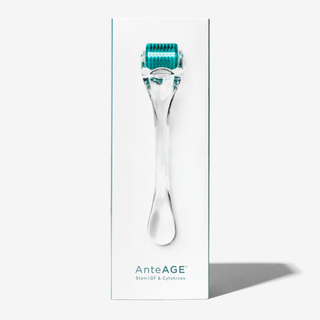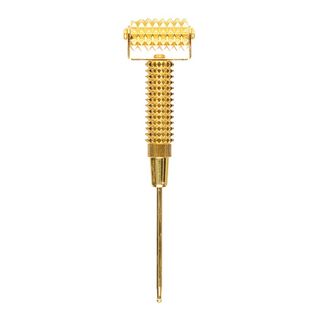I know I’m not alone when I say that the current lockdown has been both a blessing and a curse for my skin. What’s great about the lockdown is that I can really work on my acne without fear of air pollution, dirt, and debris from my daily commute, triggering breakouts. Then, there’s the downside. Thanks to lockdown mandates, many of us (myself included) cannot treat said breakouts with monthly facials or trips to the derm’s office. Instead, I’ve been searching for ways to supplement professional services with at-home treatments—safely, of course. Enter: Dermarolling.
At first glance, the handheld machine comes off as intimidating. Rolling miniature needles up, down, and across my face is supposed to help combat acne scarring and evening out my skin tone? According to Tiffany Markarian, licensed esthetician and founder of Glowmode Skincare, dermarolling does all of that and so much more. Before taking things into my own hands, I polled Markarian about the procedure, best practices, and who benefits from dermarolling.
What is dermarolling?
“So, there’s the dermaroller—the manual device—and then there’s microneedling, which is the basic technique. The common size for a dermaroller is 0.25 and what those needles do is make a little microchannel into the skin so the product or serum will penetrate deeper into the skin,” Markarian explains to me. Whatever serum you choose to use will fill into those tiny incisions created by the dermaroller to allow the product to work its magic. But there’s more.
“What’s also happening is, in that little controlled wound that we made with that little teeny needle, it triggers ATP, which helps energize the cells and gets everything moving faster. The deeper the needle depth, the better it is for scarring.”
Who would benefit most from dermarolling?
While dermarolling has a slew of benefits for different skin types, Markarian suggests those battling acne scars could see great results from incorporating a dermaroller in their routine. “It all depends upon what serums you’re using because you want the product to penetrate deeper to minimize the appearance of scarring,” she says. “Using a dermal roller at 0.25 with a particularly high-quality vitamin C serum would make a huge improvement in clearing up their scarring.” But she wouldn’t go as far as to say it would take away the scarring completely. She does recommend microneedling for those with rosacea. “Microneedling is wonderful for rosacea because you would be using a serum that would also be treating the rosacea, so anything hydrating. Those hydrating ingredients would penetrate deeper; therefore, their skin would reap the benefits of it much more than if they just applied it on the skin.”











No Comments